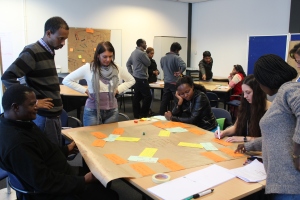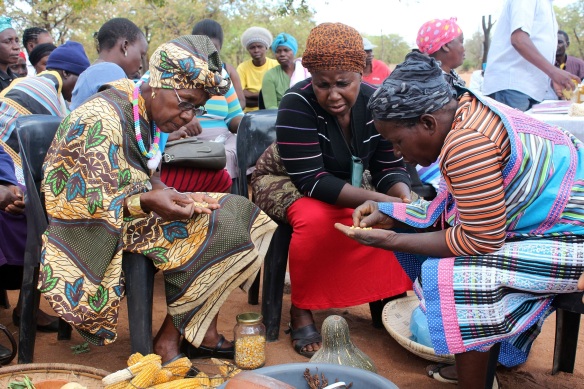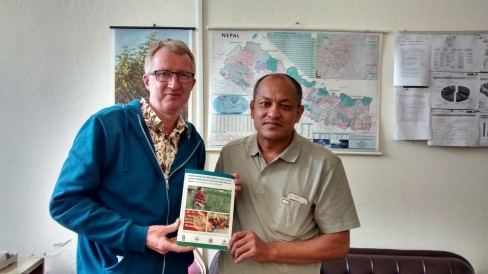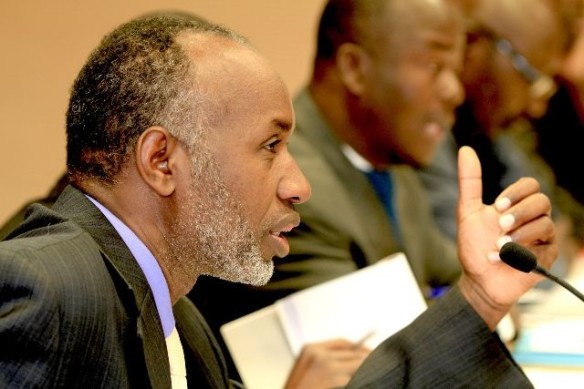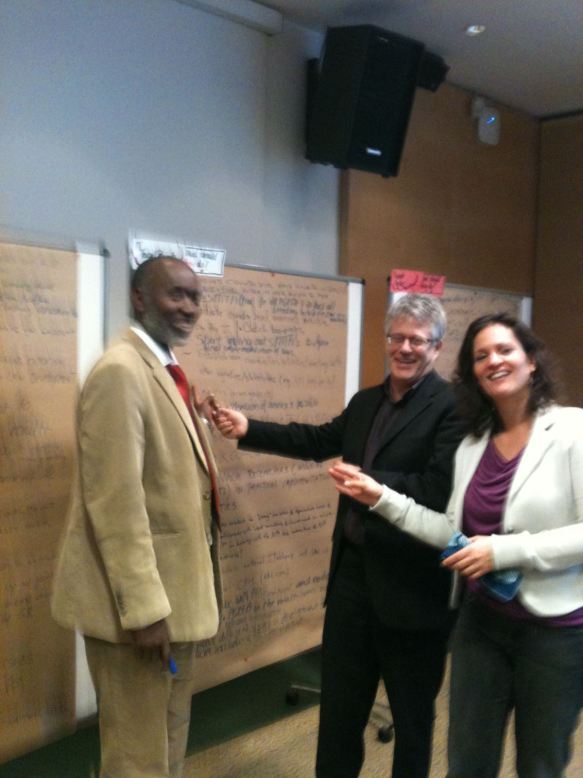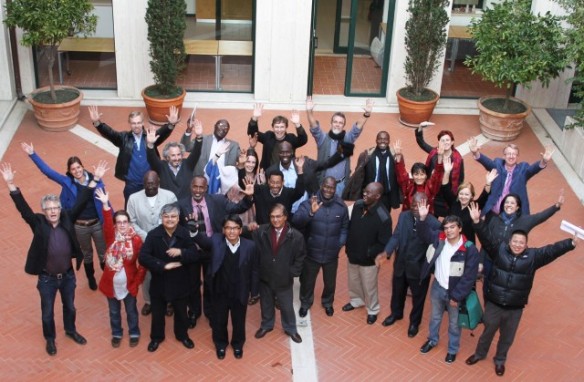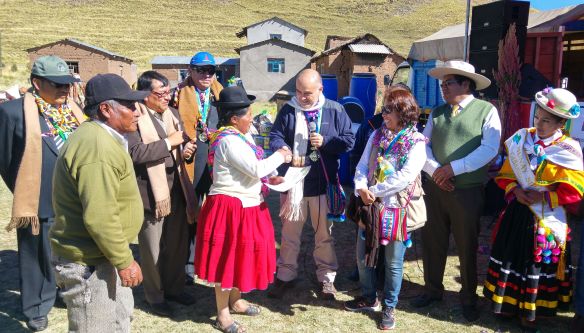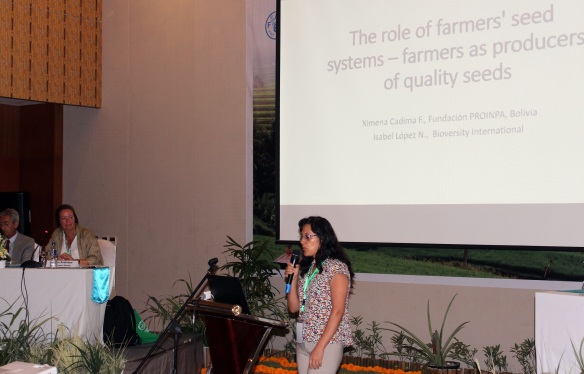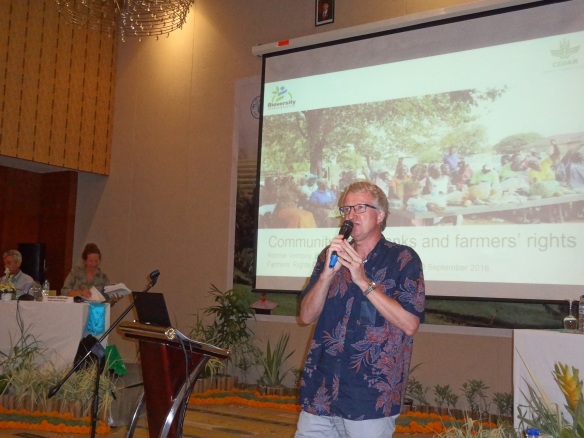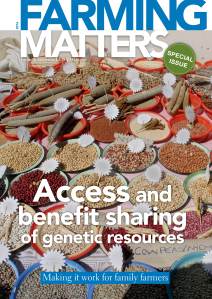On March 17, 20016, K.A. Tshikolomo (PhD, Pr. Sci. Nat), Director: Crop Production, Limpopo Department of Agriculture and Rural Development, South Africa, addressed the more than 100 visitors to Gumbu village on the special occasion of the inauguration of the local community seed bank. His words in English and Venda were:
“Today’s Programme Director, Ms Noluthando Netnou-Nkoana- Director: Genetic Resources at the Department of Agriculture, Forestry and Fisheries; Dr Ronnie Vernooy- Genetic Resource Policy Specialist, Bioversity International, Rome, Italy; Dr Bhuwon Sthapit- Senior Scientist, Bioversity International- Nepal Office; Vhafuwi vha vhathu, Muhali Vho-Gumbu….Ndaa!; Distinguished guests; Farmers; Colleagues; Ladies and gentlemen… Greetings from the Limpopo Department of Agriculture and Rural Development, and best wishes for this important event!
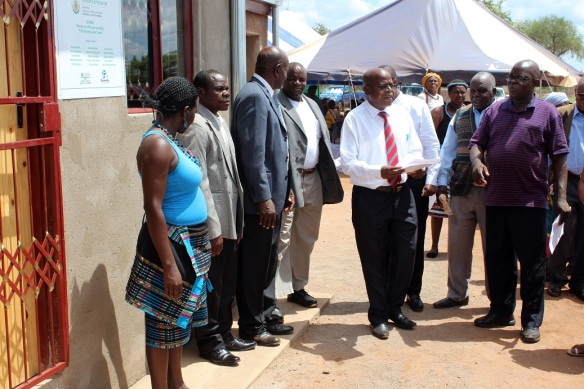
Any meaningful talk on Community Seed Banks requires that they first be properly defined. Definition: ‘A Community Seed Bank (CSB) is much more than a bank for money, it is a bank for life-food’ – Woman farmer from Zimbabwe.
Kani-ha ri nga tou ri ndi bannga ya mbeu… kana ri ri ndi tshisiku tsha mbeu? …Aiwa, vha ri ndi tshisiku tsha zwiliwa zwa vhutshilo. Musi ri na tshisiku itshi vhutshilo vhu tea u leluwa.
A CSB is a seed saving initiative designed and implemented to conserve, restore, revitalize, strengthen and improve local seed systems, especially, but not solely focussed on local varieties. Seed saving initiatives have taken various forms and names: community gene bank, farmer seed house, seed hut, seed wealth centre, seed-savers group (association or network), community seed reserve, and seed library.
As the Limpopo Department of Agriculture and Rural Development, we would like to express our gratitude to Bioversity International for the funding of the Gumbu Community Seed Bank and for all the support provided. Also, we wish to express our appreciation to our mother department, the Department of Agriculture, Forestry and Fisheries for identifying our Province, specifically the Mutale Municipality as a host for the initiative.
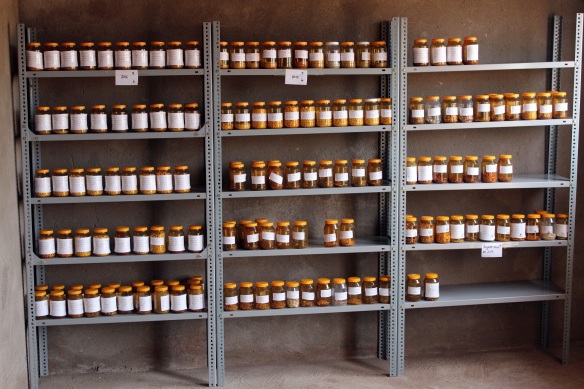
Important considerations for success of the Gumbu community seed bank
Considerations for the community seed bank itself:
-CSBs are local level institutions that contribute to seed conservation, in particular of local or farmer varieties, countering erosion of crop diversity or its loss following natural disasters and societal pressures (commercialisation, monopolisation of seed production).
-Though many CSBs were initially set up for the purpose of (1) conservation, additional functions were added over time: (2) providing access to and availability of seeds, operating as a platform for community development, and (3) contributing to seed and food sovereignty.
-CSBs provide an opportunity for interaction and integration of informal and formal seed systems, for the promotion of in-situ and ex-situ links to back up genetic resources locally as building blocks of crop improvement, food security and sustainable community development.
-CSBs should be competent and function well in terms of collection, documentation (information and traditional knowledge), regeneration, storage, distribution, and marketing of seeds of diverse local and improved varieties. Also important is introduction of latest technologies and management innovations.
-CSBs should cultivate partnerships and engage in networking and sharing of information and seeds with other informal and formal seed system actors. Some CSBs interact with researchers, extension and other development agents.
Ndi ngoho, u bvelela ha tshisiku itshi tsha Ha-Gumbu tsha vhutshilo zwi thoga uri:
Tshiimiswa itshi tshapo tshi shume zwavhudi kha u vhulunga mbeu uri ra sa xelelwe nga ifa ili lashu. Musi mbeu iyi yo vhulungwa, i a kona u wanala musi ri tshi i toda, nahone i ri fha vhudilangi ha ndisedzo ya zwiliwa;
Sa tshisiku, ri shumisane na zwinwe zwiimiswa uri mushumo washu u kone u vhonala, ri amba mushumo u ngaho u kuvhanganya na u vhulunga mbeu na lupfumo lwa ndivho-yapo, khathihi na u kovhekana na u rengisa mbeu iyi. Itali vhe’ munwe muthihi a u tusi mathuthu;
-Also, there is need for exploration of options for financial viability (funding, income generating activities), and equipping members with adequate technical knowledge. In some cases, research organisations, NGOs and developmental agents do provide technical and financial support.
-A CSB should develop niche outlets for local land races and farmer improved cultivars and strengthen the marketing of locally produced varieties.
-Successful CSBs must have effective governance and management structures, and these are formed by members of the seed banks.
A hu na inwe ndila, ri tea uri:
Ri vhe na ndila dza u kuvhanganya masheleni uri ri kone u ya phanda. Naho ri tshi nga lambedzwa zwashu nga zwinwe zwiimiswa, na rine vhane kha ri vhe na zwine ra ita, itali vhe’ hu vuswa I divusaho. Ri tea-ha u vha na mimaraga ine ra kona u isa mbeu yashu.
Ri pfumbudze mirado ya tshisiku itshi i vhe na ndivho na vhutsila ha u ita mishumo ine tshisiku itshi tsha tea u i swikela… i tshi nga vha mishumo ya zwa thekiniki kana ya vhuvhusi na vhulangi.
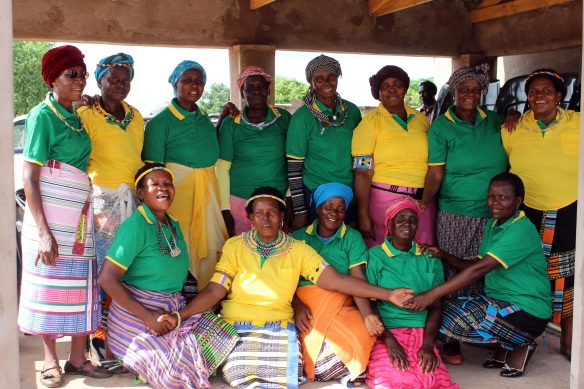
Considerations for other players
-Success of CSBs is also influenced by such issues as infrastructure (roads, communication, etc), local culture, politics, occurrence of natural disasters, and civil unrests. Support to CSBs is therefore very necessary, be it from government, traditional authorities, political and other community structures.
-Well operational CSBs need recognition, and this can be in the form of: visits by officials, awards for special efforts and achievements, and invitations to important (policy) events. Recognition may include funding and other support by government and donor agencies.
Kha ri shumisane zwavhudi na muvhuso washu, mahosi…Muhali washu Vho-Gumbu vha re vhukati hashu, zwinwe zwisiku zwi re kha lashu, zwiimiswa zwa u sedzulusa (research) na zwa pfunzo, na mazhendedzi a mveledziso uri ri kone u bvelela.
Maintaining the spirit of hard work, commitment and discipline, keeping clear strategies for governance, management, and income generation, and establishing networks and linkages with all relevant stakeholders, Gumbu Community Seed Bank is bound to succeed… I declare the Gumbu Community Seed Bank officially opened, and I accordingly hand over this important facility to the community… I thank you.”
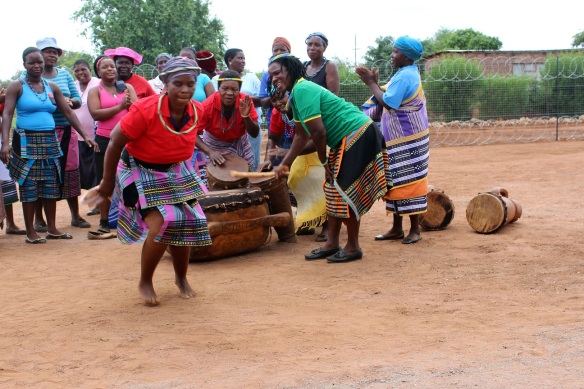
Photos: Ronnie Vernooy/Bioversity International.

